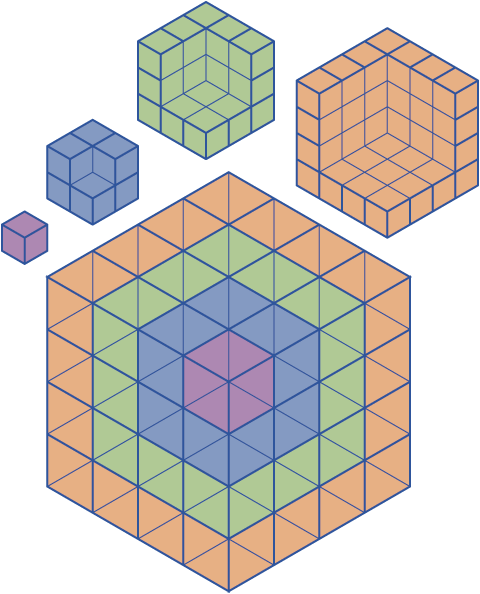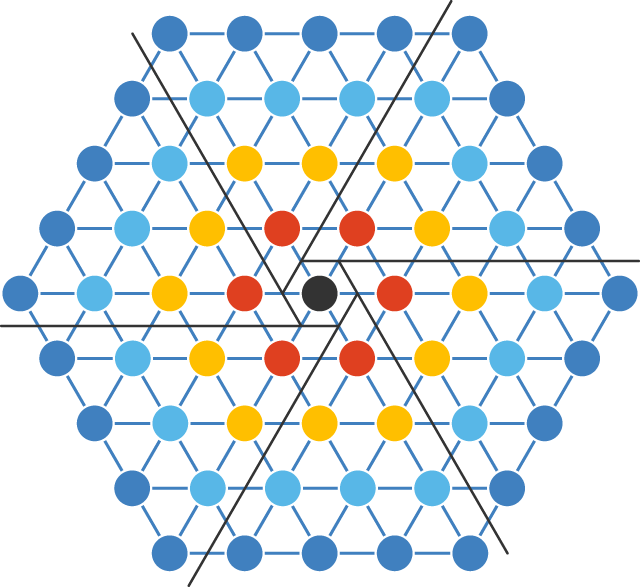Cubic sums of centered hexagonal numbers
Here we see illustrated the the principle that, for any given natural number n, the sum of the first n centered hexagonal numbers is equal to the cube of n. In this particular example, 1+7+19+37=4^2=64. In the color scheme above, the first hex number corresponds to the blue cube on the vertex of the cube figure, while the seven cubes of second hex number represent the purple shell of cubes behind this, and so on—one can easily visualize how the number of units in any particular hex number correspond to the equivalent shell of cubes.
Hex numbers
A centered hexagonal number, or hex number, is a centered figurate number that represents a hexagon, with an original dot in the center representing the first order hex number, and additional dots added in concentric rings representing successive hex numbers, forming a hexagonal lattice, or packing of circles, depending on your spatial metaphor of choice. In decimal, the first few centered hexagonal numbers are: 1, 7, 19, 37, 61, 91, 127, 169, 217, 271, 331, 397, and so on.

